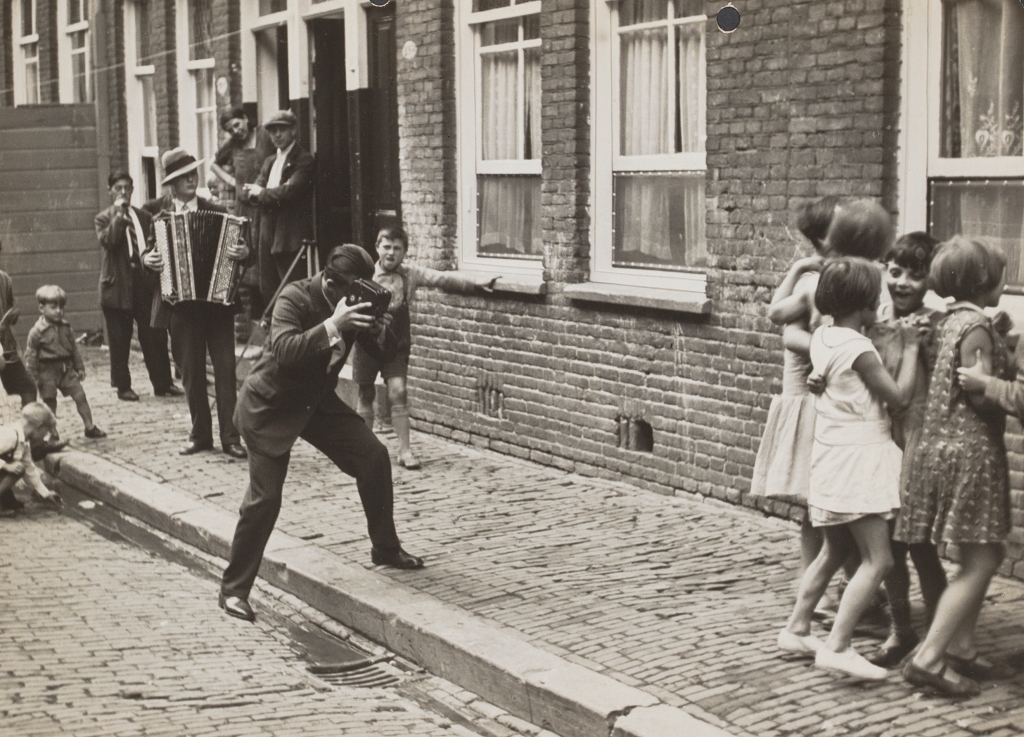This film was screened at Le Giornate del Cinema Muto in a programme ‘The Japanese Silent Cinema Goes Electric’. Alexander Jacoby and Johan Nordström, now regular curators at the Festival, explained in the Catalogue:
“This programme explores particular mode of Japanese silent cinema, the so-called saundo-ban – films that were shot as silent films, but released with a post-synchronised soundtrack, usually consisting of a music score, sound effects, and the occasional popular song.”
This film was directed by the key director Ozu Yasujiro for the Shochiku studio.
Alex and Johan added on this tittle,
“Ozu held out against making talkies longer than any other major Japanese director: his first full sound film, The Only Son (Hitori musuko), was released in 1936. Rather touchingly. Ozu’s intransigence was not out of aesthetic fidelity to silent cinema, but was the result of a promise made to his cameraman, Mohara Hideo, who was developing his own sound-on-film system.”
The film opens in an industrial waste land where Kiahachi (Sakamoto Takeshi) is looking for work accompanied by his two sons, Zenko (Kozo Tokkan) and Masako (Suematsu Takayuki). The setting, a flat terrain coved with weeds and detritus, overlooked by a gasometer or industrial blocks, reflects their situation. Their money is short, they are often hungry and on one occasion they have to make a hard choice between eating or bedding in a cheap lodging house. We follow them for several days, usually seeing them in the open as father and sons seek and debate some economic relief and later, in evenings, as they eat and/or bed down.
At one point the boys chase a stray dog as they can make money by catching the animal and handing it in to a rabies prevention programme. Kiahachi makes several fruitless enquiries at factory gates. At one point they meet a depressed mother and daughter, Otaka (Okada Yoshiko) and Kimiko (Ojima Kazuko). They meet them both wandering in the day as the adults seek work and in the evenings as they make do with the cheap lodging houses, all they can afford.
Matters look up for Kihachi and his sons when they meet an old acquaintance running a bar, Otsune ( Lida Choko). She lets them stay at the bar. Kihachi finds work and their prospects improve. Through the chats between Kihachi and Otsune we learn more about his background. It appears his wife has left him and the sons, probably due to economic reverses. But it also become apparent that Kihachi is prone to drinking sake and borrowing money.
This slightly more buoyant period encounters a crisis when Kihachi learns that Kimiko has fallen ill and Otaka is working as a waitress in a sake house [a disreputable job] in order to get money to pay for treatment At this point Kihachi makes a sacrificial gesture and the films ends with the futures of all the main characters uncertain .
The style of the film is very naturalistic and for most of the story lacking in strong drama. Critics have remarked the film as an early example of the form which was to become known as neo-realism. The camera is observational as we follow the characters in very everyday actions. However, the film is very carefully structured and the plotting present she narrative in a noticeable symmetrical arrangement. The style is recognisably that associated with Ozu though there is wider range of shots and angles than in his later films: there are several tacking shots as we follow the characters in their daytime rambles. Also recognisable are the settings and objects in which we find the characters. The gasometer, which appears a number of times, usually dominates the skyline. There is one shot of a clothes-line,a trope that turns up in innumerable films by Ozu. And interiors like the bars offer careful compositions of furnishings and objects like sake bottles.
The characters are presented very sympathetically. The adults, both single parents, are for much of the time long-suffering in their downbeat situations. It is the man, Kihachi, who towards the end acts more dramaturgically. The children offer a counterpoint and moments of humour and action as the boys play together or with Kimiko. The film reminds one of the early I was born but …. (1932) and the subsequent first sound feature The Only Son .
The film is interesting in the Ozu oeuvre {at least of the ones that I have seen] in its focus on ordinary and poor working people. Ozu’s films, especially the post-war titles, are usually set in middle-class or even upper-class households. Though this class dimension is also central in the subsequent The Only Son. Late in the film one character opines,
“It’s awful to be poor’.
And this is the central experience of all the major characters. In its focus on the working classes, poverty and [to a degree] illicit activities, the film feels closer to those of Naruse Mikio than is usual with Ozu.
However, the film ends with a title card,
‘Thus has a soul been saved’.
A rather religious, even sentimental stance that Naruse would have avoided.
The film offers all the interests and pleasures one associate with Ozu. He is well served by the cinematography of Mohara Hideo who also edited the film. The screenplay was worked out by Ozu with Arata Masao and Ikedo Tadao. The music rack uses strings, some brass and at one point woodblocks. Yet some of the most depressed sequences, for example one where the father and boys cope with heavy rain, have no music at all.








